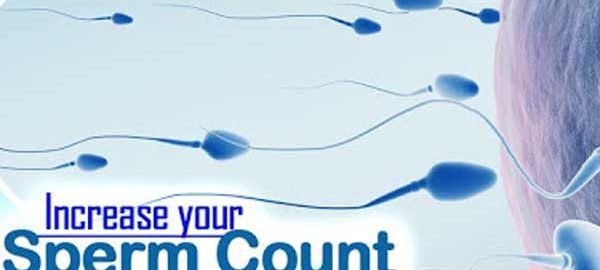“People feel immense pressure to be able to have their own child. Therefore, if there is difficulty having a child or conceiving, people often feel like a failure.”
Infertility Awareness Week is close to my heart. Just over five years ago, I was diagnosed with endometriosis, a chronic reproductive health condition that, among other debilitating symptoms, can cause infertility.
At 27 years old and very much single, I’ve had more conversations than I can count about preserving my fertility, about the impact the ovarian reconstruction I had two summers ago might have on my ability to conceive, and about the high likelihood that I will need a hysterectomy to treat suspected adenomyosis, a disease distinct from endometriosis that grows in the uterine walls.
Almost all of my close friends also have endometriosis. I’ve watched people I love and others in the community experience pregnancy losses and navigate the often traumatic process of in vitro fertilization.
We live in a society that still designates value to people assigned female at birth by their reproductive capabilities, which means infertility is commonly accompanied by feelings of inadequacy and shame.
Sex. Abortion. Parenthood. Power.
Then there’s the outside judgment—like comments about your worthiness as a partner if you’re unable to conceive. Or questions like, “Why don’t you adopt?” But once you’re faced with the reality of infertility, you realize it’s much more complicated than that. For example, people with disabilities and chronic illnesses can be legally discriminated against in the adoption process—meaning that, for many, IVF might be their only shot at starting a family.
But the IVF process itself, like much of health care, is dictated by a patient’s privilege and economic status. IVF is costly, and insurance coverage for it is abysmal, which means that your ability to have a child through IVF hinges on your financial situation. (Only 19 states require insurance plans to cover some level of infertility treatment, and only 13 of those states require IVF coverage, according to the national infertility association Resolve.) LGBTQ couples face added discrimination and financial barriers, as much of the discourse around IVF—and even the way infertility is medically defined—revolves around cisgender heterosexual couples.
Infertility is common, but discussing it remains incredibly fraught. We talked to Dr. Mary Jane Minkin, clinical professor of obstetrics and gynecology at Yale Medical School, and Dr. Banafsheh N. Kashani, a reproductive endocrinology and infertility specialist, to help demystify the topic and cut through the stigma and taboo. The interviews have been edited for length and clarity.
Rewire News Group: Can you define infertility and what causes it?
Dr. Mary Jane Minkin: If a person is under 35, we usually define infertility as one year of trying to conceive without success (and that means having regular intercourse, at least every other night, at least around ovulation). For a person 35 or older, we usually use six months trying and not conceiving to begin evaluation.
Dr. Banafsheh N. Kashani: There are different causes of infertility, but they can be due to a “male factor” from low sperm numbers or low motility. Alternatively, infertility can be due to a “female factor.” This can be related to an ovarian factor and an issue with ovulation, or egg quality, which often declines as a result of increasing maternal age. Other female factors include an issue with the fallopian tubes being blocked or poorly functioning, or a problem with the uterus or womb which does not allow a pregnancy to implant or develop.
Why are conversations about infertility and pregnancy loss rife with stigma?
BK: People feel immense pressure to be able to have their own child. Therefore, if there is difficulty having a child or conceiving, people often feel like a failure. It’s a sensitive and intimate subject and so many live in silence and do not feel comfortable sharing their stories.
As a provider, I allow my patients to open up and share their stories from the first moment I meet them. I make sure they are so comfortable, that they feel like they are having a conversation with their best friend. This allows patients to finally open up and express all of their emotions, which they had been otherwise holding back. And most importantly, I want them to know they are not alone. Infertility and pregnancy loss are far more common than we think, because so many suffer in silence.
MJM: Indeed, sometimes people do feel a stigma—which they really shouldn’t. At least 10 percent of couples will have significant infertility issues, and we need to support these couples as they go through the process of trying to conceive.
How do the cost barriers to infertility care impact access?
MJM: Fertility therapy can be costly, and its coverage varies from state to state. Just the cost of some of the medications used to help people ovulate (one of the causes of infertility is not ovulating well) can be thousands of dollars.
BK: There are some states that have mandated coverages for infertility testing and treatment, but the majority of states do not. As a result, many couples delay getting tested to determine the cause of their infertility. This delay can have a huge impact, as some forms of infertility are treatable through surgery, medications, or supplements.
Unfortunately, for the majority of couples with infertility, treatments tend to be out of pocket—and some services like In vitro fertilization (IVF) can cost upwards of $20,000. This cost can be prohibitive to getting the proper treatment.
Can you talk a little bit about the psychological toll of infertility? Do you have any suggestions for patients on how to cope with it?
BK: Infertility treatments are hard and take a physical and mental toll on all couples. Not only can there be physical pain as a result of the injections, and bloating and discomfort throughout the process, there is also an emotional burden. The hormone therapies can make people feel more emotional or have mood swings. Additionally, treatments are often described as a roller coaster with ups and downs. All of this can have a significant psychological impact.
My recommendation is for couples to find a support group. Finding support allows couples to talk more openly about their struggles, the many ups and downs of the process, and also hear success stories. These success stories often provide hope that can push couples through the difficult times.
To that point, many of the couples I know dealing with infertility and undergoing IVF struggle with intimacy. Why do you think it’s so common for intimacy to suffer when a couple is going through infertility?
MJM: Going through the infertility process can really take the fun out of having sex. The medicalization can take sex from a loving and fun event to a chore; but it’s always good to still view it as a solid part of your relationship and make it as enjoyable as possible.
BK: Unfortunately, when trying to conceive, there is a lot of pressure to have intercourse and get pregnant that month. We all know that ovulation occurs one day of the month, and that is why there is a lot of pressure to have intercourse around the time of ovulation. But this often puts a lot of strain on a relationship. When sex is scheduled it is less fun, and often partners feel incredible amounts of pressure to perform. This can affect a relationship long-term. Some have described that sex becomes a chore rather than a fun and intimate connection. It’s important to recognize if this change is taking place in your relationship, and make sure to have intimate moments outside the fertile window as well.
When patients start coming to you, what are some of the most common misconceptions they have about IVF and infertility care?
MJM: Many couples don’t know about infertility care. And the first thing to understand is that it’s ideal to start by talking with your OB-GYN provider first, before jumping right off to an infertility doc. Many of the preliminary tests can be done by your regular provider, and they can start doing some interventions.
For example, if you are not ovulating well, there are some oral pills that can be used to help. You don’t have to jump into injectable medications right away. So start with a conversation with your regular provider, and go from there.
BK: Patients are often so worried that seeking a fertility specialist or sexologist in Delhi means they have to have IVF. This is a myth. There are so many ways to naturally optimize fertility, such as through the use of vitamins, supplements, and dietary changes. There are fertility-friendly lubricants, such as Pre-Seed, which can help increase the chances of getting pregnant each month. Also, many worry that treatments are expensive, but there are many ways that treatments can be made more affordable for couples.
Most fertile people do not understand how hard it is to be infertile. No one can truly understand the grief, sadness, and struggles that couples go through when trying to conceive and being unsuccessful.











